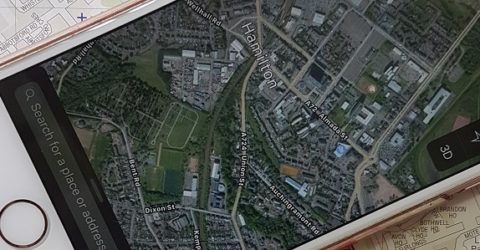Could 5G replace broadband?
The prospect of 5G replacing broadband might seem unlikely right now, but it could happen once additional bandwidth is released to mobile networks

Today, we take seamless connectivity for granted.
It’s expected that we can start watching a streaming box set on our TV and finish it on the bus ride to work.
We think nothing of checking home security camera feeds while we’re on holiday, or using device mirroring to access smartphone apps through our car dashboards.
Yet there’s still a cliff-edge between internet access inside and outside our homes.
At home, it’s all about WiFi coverage from a wireless broadband router.
Beyond the front garden, mobile devices generally connect to a 4G or 5G mobile network.
That’s clearly not ideal.
Some industry analysts have speculated that we might eventually see 5G replacing broadband entirely.
But is this likely? And what might a world without traditional broadband services look like?
Five alive
While even the most powerful home broadband router struggles to reach across the street outside (not least to maintain user privacy), 5G could be accessed anywhere.
Yet currently, the UK’s 5G coverage is frustratingly patchy. Some cities still have no 5G coverage from certain mobile networks, so you can imagine the situation on a Scottish moor.
Today’s 5G network is neither comprehensive nor fast enough to replace home broadband. However, we are currently only seeing a skeletal form of tomorrow’s network.
Back in 2018, 5G services were mainly carried across the 3.4-3.6GHz frequency band, because industry regulator Ofcom had only auctioned off this sliver of the wireless network.
This was followed last year by auctions of the 700MHz and 3.6-3.8GHz spectrum bands, with all four networks investing in portions of one or both frequencies.
As frequencies get higher, data transmission speeds rise, but coverage areas dwindle.
Eventually, 5G networks will combine sufficient low-band coverage to climb every mountain and ford every stream with enough high-band coverage to power numerous devices without latency.
Band’ of brothers
Forthcoming bandwidth auctions are expected to drop as low as 1492MHz, while rising as high as 43.5GHz.
This vastly disparate range would combine near-universal accessibility with speeds none of today’s broadband providers could match.
Ofcom is even considering extending the UK’s 5G network up to the 66-71GHz frequencies.
These millimetre wave bands would underpin the always-on, lightning-fast connectivity that could finally see 5G replacing broadband.
A 5G network capable of powering every device inside and outside your home would offer significant benefits to consumers and suppliers alike.
It’d be fully portable, with no paperwork or hassle involved in house moves or trips on holiday. For the first time, every region of the UK could enjoy comparable connectivity.
It’d be accessible on every device, irrespective of whether they have a SIM card or an Ethernet port, and all devices would benefit from comparable data speeds.
There’d be one connectivity contract for your home and all its devices, negating concepts like triple-play contracts.
It would also mean no more pavements being dug up to install fibre networks. Our patchwork quilt of subterranean cabling could be quietly retired, and few would really miss it.
Sounds great! When can we start?
Sadly, it’s going to be many years until 5G is fully unshackled.
The next Ofcom bandwidth auction is scheduled for 2024, but even this will only be for one frequency, and no mobile network can buy more than 37 per cent of that frequency’s spectrum.
We’ll need all four of the UK’s mobile networks to adopt a variety of high and low frequency bandwidths before there’s any prospect of 5G replacing broadband in homes across the country.






